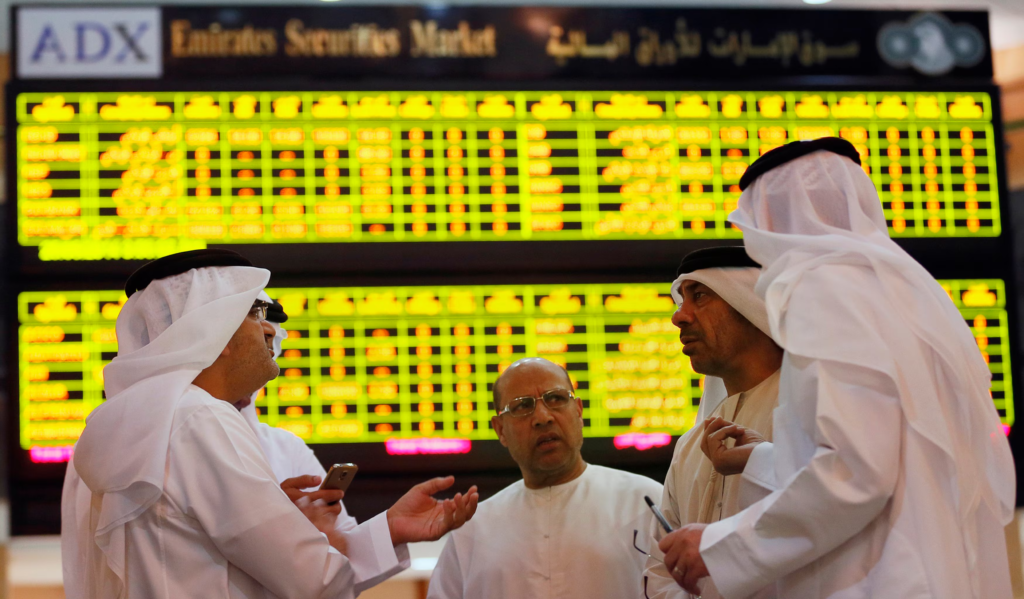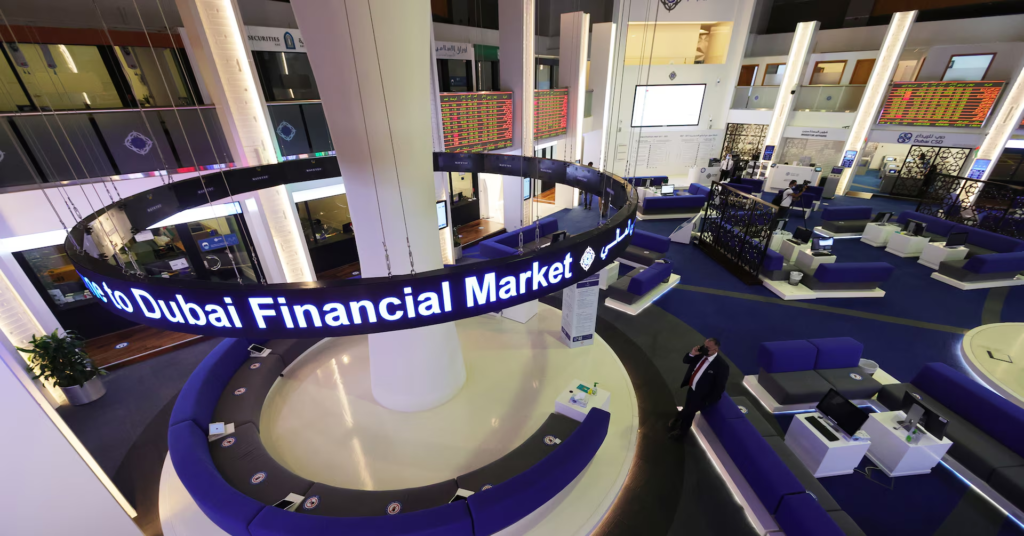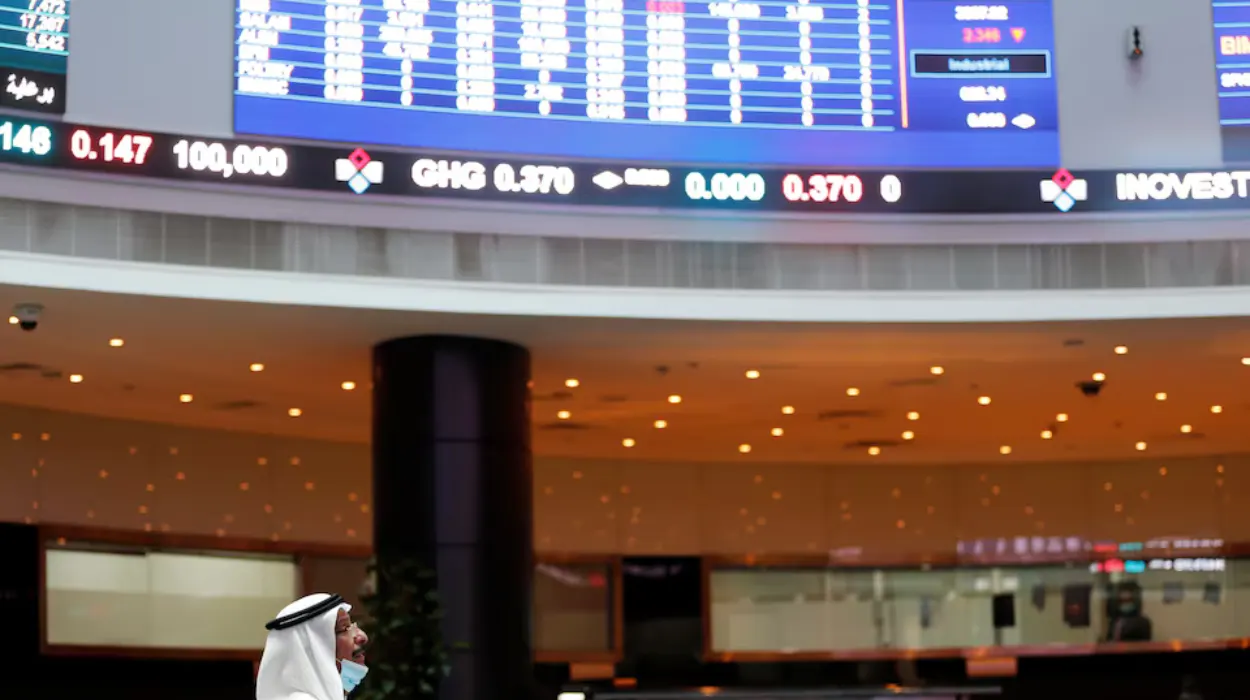Gulf markets flat amid U.S. tariff tensions that’s the dominant theme investors are grappling with this week. As the United States considers new and harsher tariff policies on its trade partners, regional equity indices in the Gulf have responded with subdued performance. Qatar’s benchmark index (.QSI) remained largely unchanged on Sunday, reflecting a cautious mood throughout the Gulf Cooperation Council (GCC) economies.
This neutral market movement underlines rising concerns over the future of global trade stability. The new U.S. tariff proposals target Mexico, Canada, the European Union, and potentially a wider set of global imports. If approved, these tariffs could jump from the current 10% to an alarming 15–20%, disrupting trade flows worldwide.
Investor Sentiment Dampens Across the Gulf
Markets across the GCC, including the UAE, Saudi Arabia, and Kuwait, displayed mixed tones. While some saw modest gains, others recorded slight declines or remained flat. However, is clearly defining the mood cautious and uncertain.
In Qatar, which pegs its currency to the U.S. dollar, changes in American trade policy can have direct and indirect consequences. A hike in tariffs might not only affect the cost of imported goods but also shake investor confidence in economies that heavily rely on international trade routes and partnerships.

Qatar’s Dollar-Pegged Economy Faces Challenges
Qatar’s economy, although resilient, is closely tied to global economic trends. Its dollar peg adds a layer of exposure to decisions made by the U.S. Federal Reserve and trade authorities. With the U.S. considering elevated tariffs on key economies, ripple effects are being felt in Doha.
The Qatar Stock Exchange (QSE) showed limited movement on Sunday, with investors choosing to remain on the sidelines. The Gulf markets flat amid U.S. tariff tensions scenario is evident in the minimal trading volume and lack of volatility. Financial analysts suggest that unless there’s more clarity on the scope and timeline of these tariffs, markets may remain range-bound in the short term.
Broader Trade Tensions Create Global Uncertainty
President Joe Biden’s administration is reportedly evaluating tariff hikes to protect domestic industries and reduce dependency on foreign imports. While the political objective may be internal stability, the global consequences could be widespread.
The markets in Saudi Arabia and the UAE also echoed similar caution, though some sectors like banking and utilities managed small gains. The energy sector, typically a pillar of strength in Gulf economies, witnessed minor fluctuations as oil prices also responded to global cues.
Foreign Investors Pull Back Amid Uncertainty
Foreign institutional investors, who have been gradually increasing their presence in GCC markets due to reforms and improved transparency, may hold back until there is more certainty. This lack of movement adds to the narrative of Gulf markets flat amid U.S. tariff tensions, as no clear buying trend is visible.
In Qatar, the financial and industrial sectors saw some light activity, but without any major announcements or earnings surprises, the index remained within its previous range. Sectors that depend heavily on exports or imported technology are particularly vulnerable to any increase in tariffs or global trade friction.
Gulf Economies Need Trade Predictability
Trade stability is crucial for Gulf nations. These economies, despite diversification efforts, are still significantly tied to global energy exports and the smooth functioning of international trade. Any disruption such as increased tariffs or strained geopolitical relations could slow growth.
For Qatar, which has expanded into LNG exports and infrastructure development, maintaining healthy international trade relations is vital. Any escalation in tariffs or barriers from Western economies may not directly affect gas exports but can hamper other aspects of the economy like technology transfer, construction equipment imports, and investment inflows.

Short-Term Outlook: Caution Likely to Persist
Market analysts suggest the current caution in Gulf equities may last through the coming weeks unless the U.S. government offers clarity or backs down from its tariff threats. The Gulf markets flat amid U.S. tariff tensions trend could deepen if the proposals are confirmed and implemented.
Moreover, inflation fears driven by higher import costs could weigh on corporate earnings, especially in the second half of the year. This may prompt regional central banks to revise growth projections or adjust interest rate policies, even if they are largely aligned with U.S. rate decisions due to currency pegs.
What to Watch Next
- Official U.S. Policy Announcements – Confirmation or rejection of the proposed tariffs will be a key factor.
- Oil Price Volatility – As oil remains a major revenue stream, any fluctuation can move Gulf markets sharply.
- Q2 Earnings Reports – Company results in the coming weeks will help assess the ground-level impact of global uncertainty.
- Geopolitical Developments – Any tension in the Red Sea, Strait of Hormuz, or around Gaza can further impact investor mood.
Until then, markets are likely to remain range-bound with minimal enthusiasm.
Do follow Gulf Magazine on Instagram
Also Read – Cebu Oman Investment Forum Opens Doors to Stronger Trade Relations



